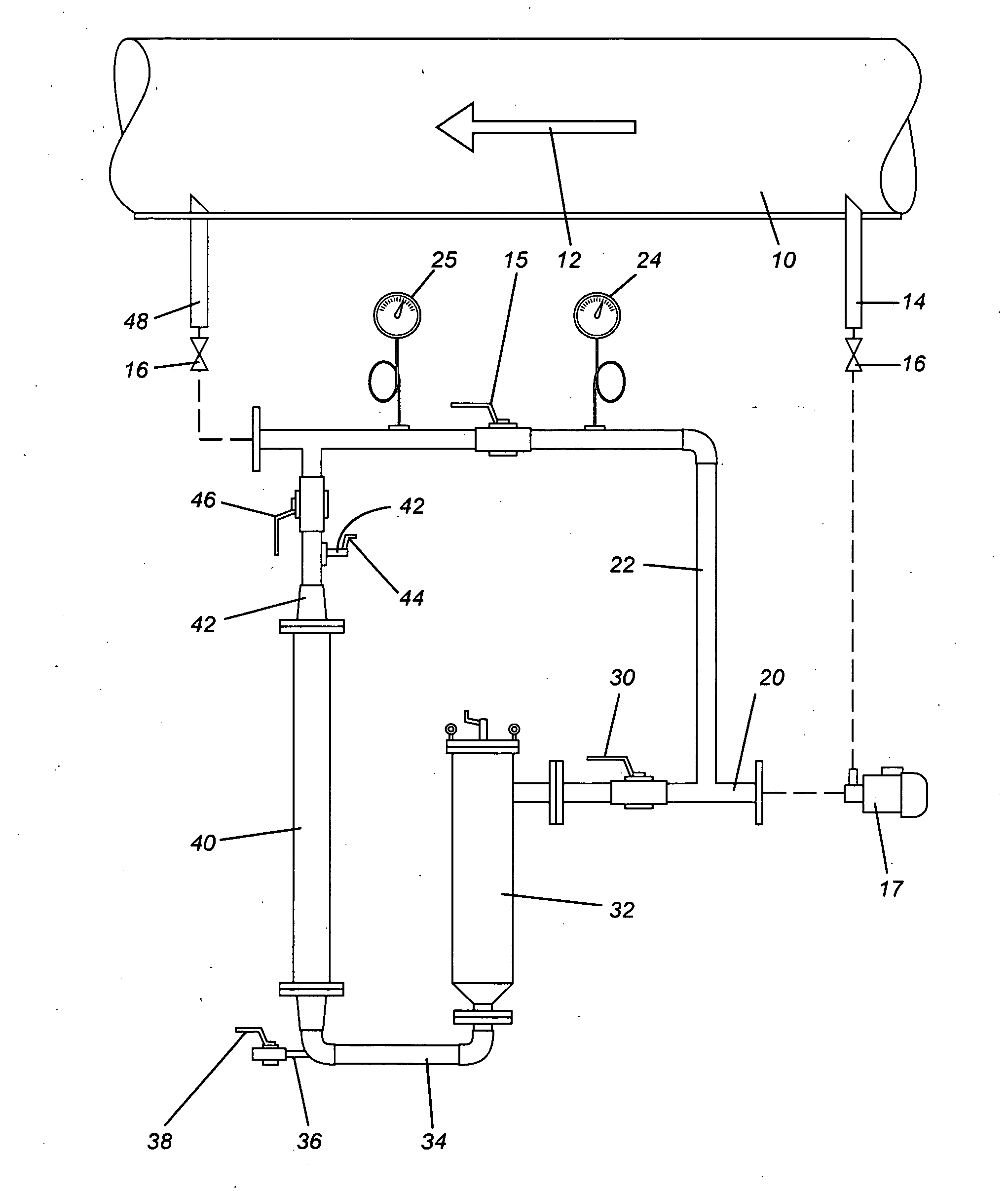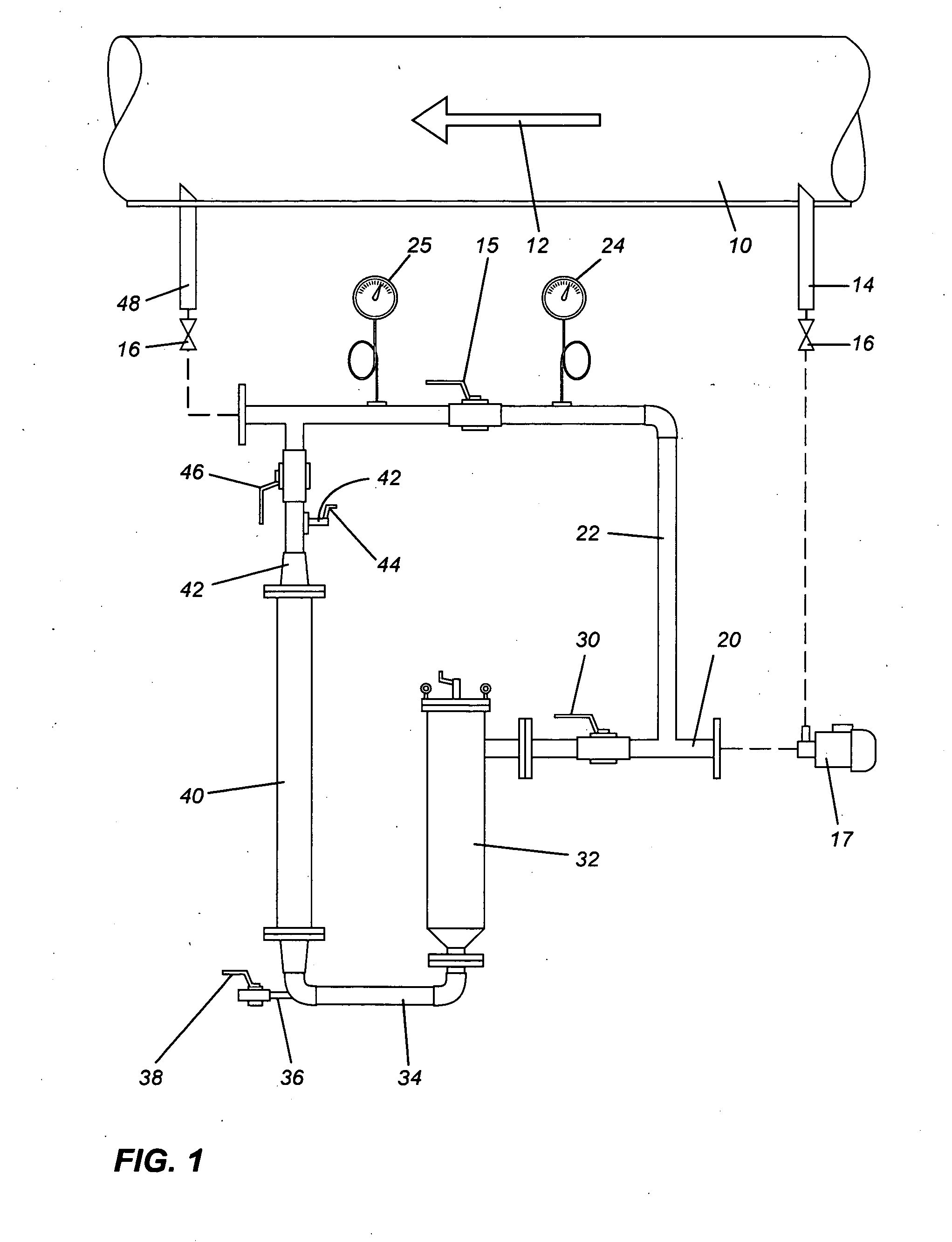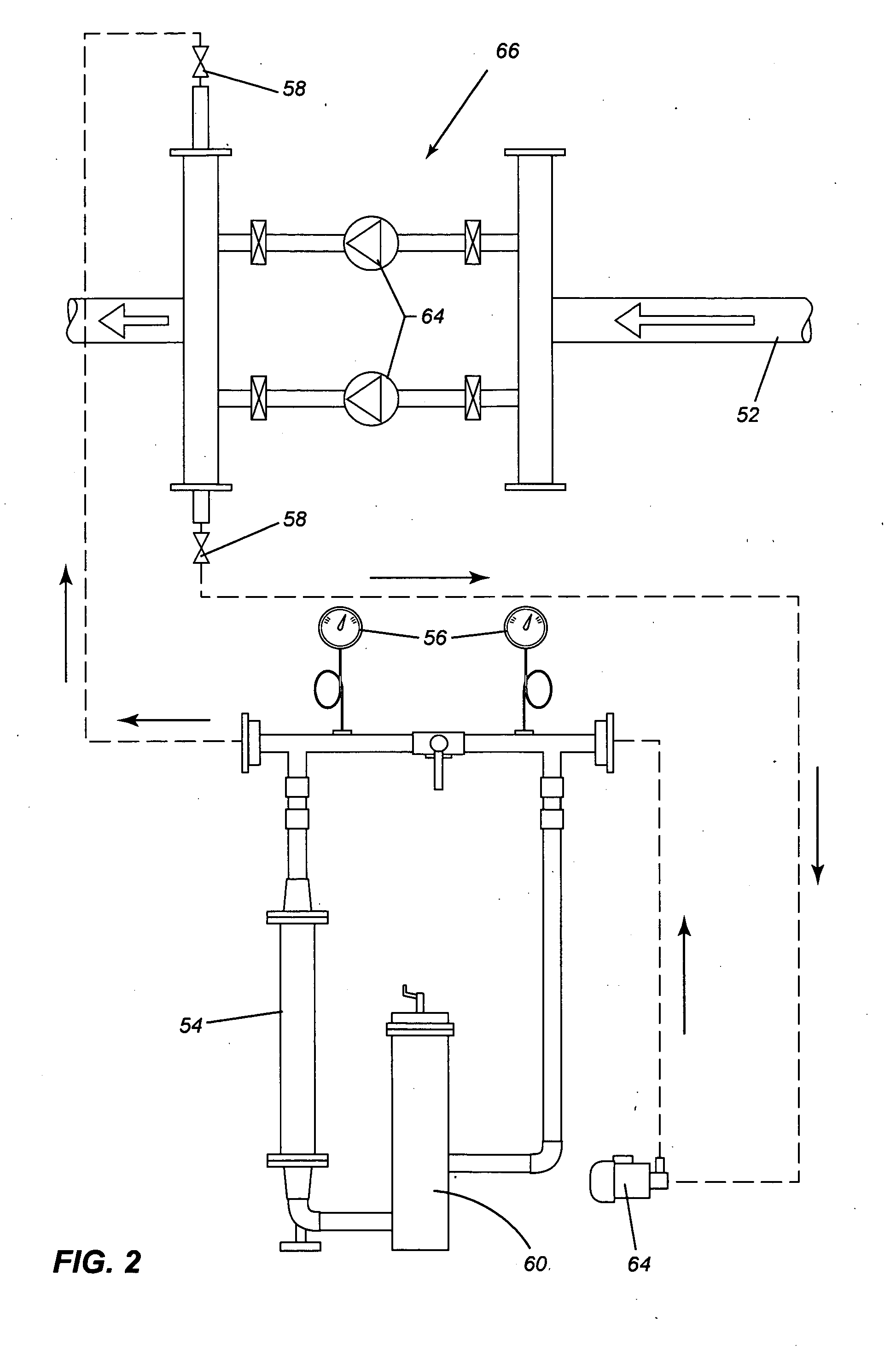Water treatment
a water treatment and water technology, applied in water/sludge/sewage treatment, specific water treatment objectives, lighting and heating apparatus, etc., can solve the problems of reducing the efficiency of water treatment. , to achieve the effect of reducing the overall utility, and reducing the cost of treatmen
- Summary
- Abstract
- Description
- Claims
- Application Information
AI Technical Summary
Benefits of technology
Problems solved by technology
Method used
Image
Examples
Embodiment Construction
[0021]Referring to the drawing in greater detail and by reference characters thereto, there is illustrated a treatment system according to an embodiment of the present invention. The system is designed to be used with a closed circuit heat exchanger which includes a pipe 10 having fluid circulating in the direction indicated by arrow 12.
[0022]The system will include a conduit 14 which is tapped into pipe 10 such that a certain portion of the water within the heat transfer circulation will be diverted thereto. Preferably, the amount is between 5 and 15 percent and even more preferably between 8 and 10 percent of the total flow.
[0023]Conduit 14 includes a valve 16 thereon and is provided a pump 17 on the line, depending upon the desired pressures.
[0024]A system inlet 20 has a bypass conduit 22 located thereat. On bypass conduit 22 there are provided pressure gages 24 and 25 with a valve 26 therebetween.
[0025]Treatment line 28 has a valve 30 thereon. A filter 32 having the desired filt...
PUM
| Property | Measurement | Unit |
|---|---|---|
| magnetic field | aaaaa | aaaaa |
| heat | aaaaa | aaaaa |
| pressure drop | aaaaa | aaaaa |
Abstract
Description
Claims
Application Information
 Login to View More
Login to View More - R&D
- Intellectual Property
- Life Sciences
- Materials
- Tech Scout
- Unparalleled Data Quality
- Higher Quality Content
- 60% Fewer Hallucinations
Browse by: Latest US Patents, China's latest patents, Technical Efficacy Thesaurus, Application Domain, Technology Topic, Popular Technical Reports.
© 2025 PatSnap. All rights reserved.Legal|Privacy policy|Modern Slavery Act Transparency Statement|Sitemap|About US| Contact US: help@patsnap.com



